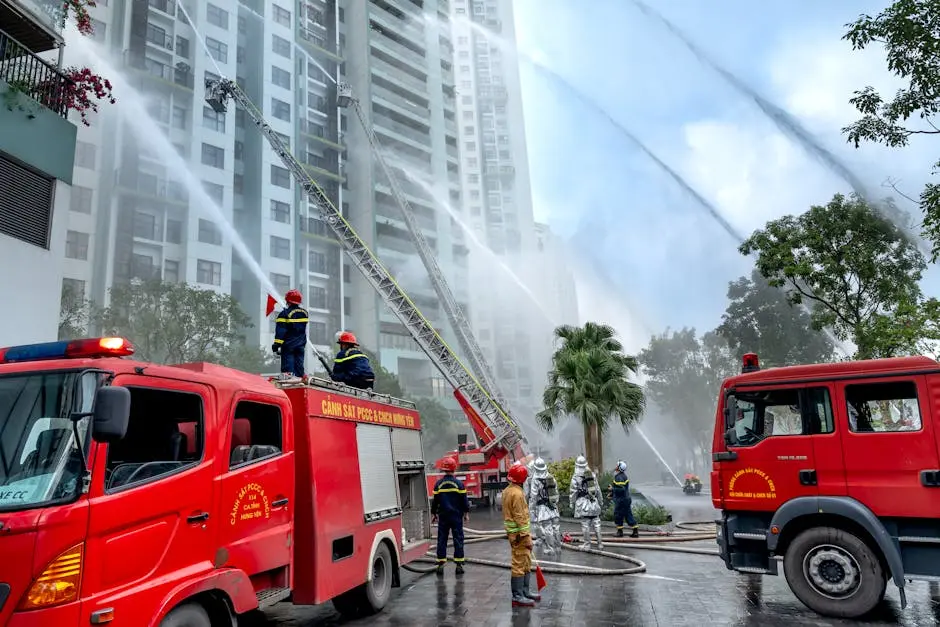Managing a high-rise building comes with its own set of unique challenges and demands. Whether you’re new to the role or looking for ways to improve your current practices, this guide will provide valuable insights into the effective management of high-rise associations. From understanding the essentials of association management to implementing best practices for maintenance and communication, we’ve got you covered with everything you need to know.
Understanding High-Rise Association Management
High-rise association management involves overseeing the operations and maintenance of multi-story residential buildings. The scope of responsibilities includes managing common areas, ensuring regulatory compliance, and fostering community engagement among residents.
High-rises are unique ecosystems that require a delicate balance of management skills and interpersonal relations. Unlike smaller residential complexes, high-rises have extensive infrastructure that demands regular upkeep and strategic planning. It is not just about maintenance; it’s about creating an environment where residents feel valued and engaged. A well-managed high-rise is one where the needs of both the property and its people are met harmoniously.
One cannot underestimate the importance of understanding the intricacies involved in high-rise association management. The role’s complexity is augmented by the sheer density and diversity of its resident base. It demands a proactive approach where foresight and adaptability are key. Keeping abreast of the latest industry trends, regulations, and technological advancements is crucial. An informed management team is best equipped to address the multifaceted challenges of high-rise living.
Key Roles and Responsibilities
Identifying the key roles in managing a high-rise building is crucial for its success. This includes property managers, association board members, maintenance teams, and security personnel. Understanding each role’s duties helps ensure smooth operations and accountability.
In high-rise management, every role is a cog in the larger machine. Property managers serve as the linchpin, coordinating between the board, residents, and service providers. Board members, often residents themselves, are tasked with making decisions that affect the entire community. Maintenance teams keep the physical aspects of the property running smoothly, while security personnel ensure the safety and well-being of everyone. Together, these roles create a network of responsibility that supports the building’s operations.
Effective Communication Strategies
Communication is at the heart of successful high-rise management. Implementing effective communication channels, such as newsletters, community meetings, and digital platforms, can enhance transparency and build strong resident relationships.
Digital platforms have revolutionized how high-rise associations communicate. Tools such as mobile apps and online portals provide residents with easy access to important information, updates, and a platform to voice concerns or feedback. By leveraging these technologies, management can foster an engaged community that feels heard and informed, crucial for maintaining harmony and satisfaction among residents.
Financial Management and Budgeting
Proper financial management safeguards the association’s financial health. Developing a comprehensive budget, ensuring timely collection of dues, and planning for future expenditures are essential components of sound financial stewardship.
High-rises, with their expansive infrastructure and diverse amenities, require meticulous financial oversight. The board and management must work collaboratively to ensure all expenditures align with both short-term needs and long-term goals. Anticipating future needs through reserve funds and planned investment is essential to avoid unexpected financial strain. Clear financial policies and regular audits further instill trust and transparency, essential elements for resident satisfaction and confidence.
One critical aspect of financial management is education. Educating residents about the importance of dues and how they translate into the services and maintenance they experience daily builds trust and encourages timely payments. A well-informed community understands the implications of financial decisions, leading to smoother operations and community harmony.
Maintenance and Safety Protocols
Regular maintenance and stringent safety protocols are vital for preserving property value and ensuring resident safety. Establishing a maintenance schedule and prioritizing safety inspections can prevent potential issues and create a secure living environment.
Safety is the cornerstone of high-rise management. Implementing rigorous safety protocols, especially in cases of fire or structural emergencies, is non-negotiable. Regular training sessions and clear evacuation plans must be established and communicated to all residents. Technology plays a critical role here; smart systems can monitor, report, and even automate responses to various safety concerns, significantly enhancing existing protocols.
Maintenance goes beyond mere repairs. It’s about creating a living environment where everything from elevators to plumbing functions seamlessly. Proactive rather than reactive maintenance prevents minor issues from escalating into significant problems. A well-maintained building not only ensures resident safety but also enhances property value, making regular maintenance underrated but an essential component of association management.
Managing Resident Relations
Creating a cohesive community is a key goal for high-rise associations. Addressing resident concerns promptly, planning community events, and encouraging resident participation in governance can foster a sense of belonging and cooperation.
The importance of community cannot be overstated in high-rise living. A well-managed building isn’t just one that runs smoothly; it’s a place where residents feel at home, respected, and involved. Facilitating regular community events helps break down barriers, allowing residents to interact meaningfully, thus reducing conflicts and fostering cooperation.
Encouraging residents to get involved in decision-making processes, such as participating in board meetings or committees, ensures diverse voices are heard and considered. This inclusivity strengthens the sense of ownership among residents, leading to happier communities. A community that feels invested is more likely to adhere to building policies, pay dues on time, and contribute positively to the overall environment.
Legal and Regulatory Compliance
Compliance with local laws and regulations is non-negotiable in high-rise management. Staying informed about legal requirements and working closely with legal advisors ensures that all activities adhere to the necessary standards and avoid legal complications.
The legal landscape for high-rises can be intricate, with layers of federal, state, and local regulations to navigate. Regular consultation with legal experts keeps the association ahead of any changes, ensuring that governance and daily operations remain above board. Importantly, legal compliance is not only about adhering to rules but also about protecting residents’ rights and enhancing their quality of life within the community.
Conclusion: Enhancing Your High-Rise Association Management
Managing a high-rise association requires a blend of strategic planning, effective communication, and proactive maintenance. By understanding the unique challenges and implementing best practices, you can ensure a thriving community that benefits all its residents. With the guidance provided in this ultimate guide, you’re now better equipped to handle the complexities of high-rise association management. Remember, successful management is about creating a seamless living experience for residents, fostering a sense of community, and ensuring safety and satisfaction for everyone involved.





